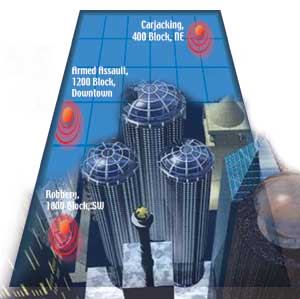The calculation does not factor in the age, race, or ethnic backgrounds of community residents because the data is used by landlords.
It also isn’t marketed as a stand-alone risk assessment tool, says Groussman, a former liability consultant who says the firm’s scores are on target 80 percent of the time. “We don’t want this to be the end-all,” he says. “We know in [the multifamily] industry, you need to do more.”
Apartment Applications At Memphis-based Mid-America Apartment Communities, which owns 133 properties in the Southeast, risk managers do a lot more. “We get crime maps on every location,” says Doug Clark, director of risk management. His staff then couples that data with incident reports from Mid-America’s complexes—a statistic the CAP Index does not include in its score. His team also keeps in touch with local police and checks potential tenants for criminal backgrounds.
Crime mapping, Clark notes, is not “a save-all product. You have to use it in conjunction with your current risk-management practices.”
Still, knowing the crime history and having a five-year forecast is useful when it comes to choosing a site for an apartment building—or a hotel—and deciding which security features to include in a new building or add to an existing site. At Marriott International, for instance, security executives lean on their CAP Index scores to help them design their new hotels.
“It helps us determine the optimal level of security for each property,” notes Chad Callaghan, vice president of enterprise loss prevention for the Bethesda, Md.-based hotel chain.
Sites deemed “hard targets” are built with controlled access to parking garages and a built-in security office, for example, Callaghan says. Those considered normal security risks are more likely to be open to the public.
Knowing how much crime goes on in the surrounding neighborhood—the CAP Index covers a three-mile radius around the property—alerts local hotel managers to the potential for thefts and assaults on the property, Callaghan adds.
Mid-America’s Clark says the maps also signal changes in activity over the past year, a red flag that allows managers to add cameras, invite more police officers to live in the complex or install security gates at entrances.
Those tactics successfully deter crime, says John Morgan, assistant director of the National Institute of Justice, the U.S. Department of Justice’s research agency.
